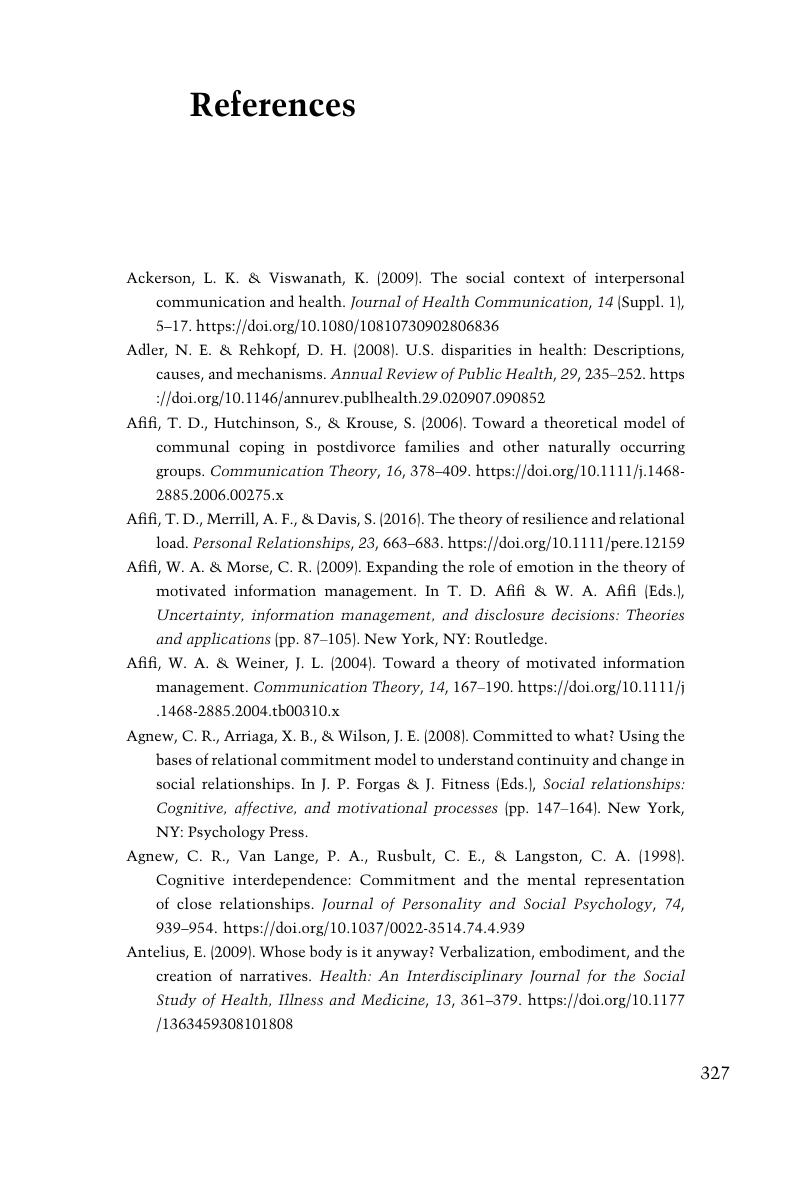Book contents
- Health and Illness in Close Relationships
- Advances in Personal Relationships
- Health and Illness in Close Relationships
- Copyright page
- Dedication
- Contents
- Acknowledgments
- Introduction
- Part I The Unique Context of Health and Illness in Close Relationships
- Part II Health and Illness, the Body, and Relational Processes
- Part III Integrated Theory of Health and Illness Trajectories and Relational Processes
- References
- Index
- References
References
Published online by Cambridge University Press: 11 January 2019
- Health and Illness in Close Relationships
- Advances in Personal Relationships
- Health and Illness in Close Relationships
- Copyright page
- Dedication
- Contents
- Acknowledgments
- Introduction
- Part I The Unique Context of Health and Illness in Close Relationships
- Part II Health and Illness, the Body, and Relational Processes
- Part III Integrated Theory of Health and Illness Trajectories and Relational Processes
- References
- Index
- References
Summary

- Type
- Chapter
- Information
- Health and Illness in Close Relationships , pp. 327 - 365Publisher: Cambridge University PressPrint publication year: 2019

